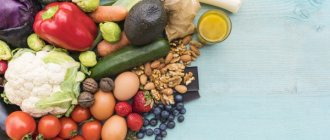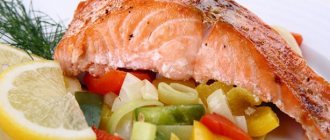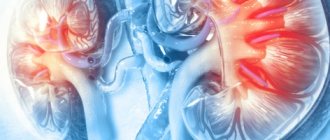What is Fodmap?
FODMAP substances are short-chain carbohydrates that are not digested in the digestive tract and are not absorbed by the human body.
FODMAP is an acronym for the following fermentable carbohydrates:
- Oligosaccharides : Wheat, rye, legumes, various vegetables such as onions and garlic.
- Disaccharides : Milk, cream cheese, yogurt. Lactose is the main carbohydrate.
- Monosaccharides : Various fruits, including dates, figs, mangoes, agave, and honey. Fructose is the main carbohydrate.
- Polyols : Some fruits and vegetables such as blackberries, lychees, and some low-calorie sweets such as sugar-free gums.
These substances contribute to an increase in fluid content in the lumen of the digestive tube and increased gas formation. As a result, there is a pathological stretching of the intestinal wall, leading to a wide range of unpleasant symptoms: bowel problems such as constipation or diarrhea, bloating and pain in the lower abdomen.
The FODMAP diet was developed by Australian scientists to improve the condition of patients suffering from irritable bowel syndrome (there is evidence of effectiveness also in Crohn's disease).
A low FODMAP nutrition system involves the exclusion or maximum reduction of the described substances in the diet of patients. As a result, there is a decrease in symptoms and an improvement in quality of life.
FODMAPs are a group of fermentable carbohydrates that contribute to a wide range of digestive disorders. Limiting such substances in the diet has a beneficial effect on the course of diseases such as Crohn's disease and irritable bowel syndrome.
What to do if diet doesn't help
A low FODMAP diet does not always help with irritable bowel syndrome. It fails 30% of the time, but before you give up, check the following:
- If the pain does not go away, make sure that you do not eat foods with prohibited ingredients. When buying ready-made or semi-finished food, people do not notice harmful ingredients. And the recipes include garlic, onions, artificial sweeteners sorbitol or xylitol: a small amount is enough to aggravate the disease.
- Make sure you use the FoodMaestro app, developed by the folks at King's College London, or Monash University's FODMAP diet option. Check if you have translated the name of your menu component correctly.
It is not recommended to follow the diet without consulting a gastroenterologist. Unlike nutrition systems aimed at losing excess weight, a therapeutic menu requires a more serious approach. It is not enough to simply take a list of permitted and prohibited dishes: the diet is compiled individually in each specific case. Without medical supervision, you risk depriving yourself of important nutrients, and their lack will affect your health.
What to do if the gastroenterologist has not heard of the diet? The developments are relatively new, and not every physician follows the information. But more and more gastroenterologists are learning about a diet low in short-chain carbohydrates. Consult several specialists and you will find a competent one.
The Low-FODMAP diet can dramatically improve the condition of people with gastrointestinal diseases, as confirmed by Dr. Megan Rossi. But the diet is effective in 70-76% of cases, and requires the supervision of a qualified physician. The Low-FODMAP nutrition system includes 3 stages, and their total length takes up to 6 months.
Megan Rossi reminds you that unless you have a medical condition, the diet may do more harm than good. It helps to reduce body weight because it involves giving up flour. But the power system is aimed at solving a specific problem. Healthy people may have complaints about the functioning of the gastrointestinal tract, since they will not receive prebiotics - food components that are fermented by the microflora of the large intestine and stimulate its growth. But with an appropriate diagnosis, the diet improves the overall quality of life.
The benefits of such a diet
The low FODMAP diet has been tested on tens of thousands of people in more than 30 scientific studies. The positive effects described below have an evidence base.
Reduction of dyspeptic disorders
Disorders in individuals with irritable bowel syndrome can vary widely. They include: increased gas production, diarrhea or constipation, pain in the lower abdomen (usually worse at night or before bowel movements).
According to scientists, the distinctive unpleasant subjective symptoms are pain and bloating, which affect more than 80% of patients.
American scientists have found that these symptoms dramatically change the quality of life and depress mood. 90% of respondents claim that they are willing to shorten their lives by a quarter in exchange for the opportunity to become healthy again. About 18% of patients take narcotic analgesics to relieve pain.
Excluding FODMAP foods from the diet has a beneficial effect on the general condition of patients. According to one of the large foreign meta-analyses, when following a low FODMAP diet, there is a decrease in the severity of abdominal pain and increased gas formation, and normalization of mood and brain function.
According to British experts, this type of diet can also effectively combat constipation or diarrhea.
Thus, a diet low in FODMAPs can reduce the severity of a number of dyspeptic disorders (stool disorders, flatulence, abdominal pain).
Improving quality of life
People suffering from irritable bowel syndrome experience significant limitations in their usual activities, some lose not only their work and social adaptation, but also their ability to self-care.
According to Australian scientists, the Fodmap diet leads to a decrease in the severity of the main symptoms of the disease. The study was based on a questionnaire survey of patients using the irritable bowel syndrome symptom severity scales (IBS-SSS and IBQ-QOL).
A diet with limited FODMAP foods significantly reduces the severity of pathological manifestations of the digestive system, which helps normalize mood and increase the desire for life.
TREATMENT OF IBS
A diet free of FODMAPs (fermentable oligo-, di-, monosaccharides and polyols) is considered to be the correct therapeutic approach in the treatment of IBS. The incriminated foods actually cause intestinal dysfunction when they are digested by bacteria through the production of gas and short-chain fatty acids. Limiting their intake provides benefits supported by the literature, but they must be weighed against possible negative consequences to confirm the value of this type of diet as a first-line therapeutic option. Lack of FODMAPs can actually lead to eating disorders, deficiencies and biological disturbances directly or following gut microbiota dysbiosis. They also should not be used as a diagnostic test for IBS instead of recognized symptomatic criteria (Rome IV criteria), say the experts, who also reiterate the importance of gradually reintroducing eliminated foods after testing their tolerance.
Who is it shown to?
The diet is indicated mainly for people who suffer from irritable bowel syndrome.
The most important thing that needs to be done before prescribing a diet is to make sure that the diagnosis is correct (confirmed by laboratory and instrumental means), to exclude all possible other pathologies that have a similar clinical picture.
In addition to IBS, the diet can be used for the following conditions:
- Crohn's disease.
- Nonspecific ulcerative colitis.
- Celiac disease.
- Endometriosis.
- Fibromyalgia.
- Functional dyspepsia.
- Scleroderma.
- Diverticulitis.
- Chronic fatigue syndrome.
However, evidence regarding the effectiveness of the diet for written pathologies is almost completely absent. Therefore, dietary changes cannot be recommended.
Before starting treatment, it is extremely important to enlist the support of a specialist. Only a doctor can competently assess the state of health and make the right decision.
A low FODMAP diet has a fairly wide range of indications, but not all of the effects have been scientifically proven. Currently, a significant positive effect is observed only in relation to irritable bowel syndrome.
What happens when you eat them?
Most FODMAPs pass through most of your intestines unchanged. They are completely resistant to digestion and fall under the category of dietary fiber.
But some carbohydrates only function as FODMAPs in some people. These include lactose and fructose.
General sensitivity to these carbohydrates also varies from person to person. In fact, scientists believe they contribute to digestive problems like IBS.
When FODMAPs reach the colon, they are fermented and used by gut bacteria as an energy source.
The same thing happens when dietary fiber feeds your friendly gut bacteria, leading to various health benefits.
However, friendly bacteria tend to produce methane, while bacteria that feed on FODMAPs produce hydrogen, another type of gas that can lead to gas, bloating, stomach cramps, pain, and constipation ().
Many of these symptoms are caused by intestinal enlargement, which can also make your belly appear larger ().
FODMAPs are also osmotically active, meaning they can pull water into your intestines and promote diarrhea.
Summary:
FODMAPs are poorly absorbed in some people's bodies, causing them to reach the colon. They draw water into the intestines and are fermented by intestinal bacteria, producing hydrogen.
How to follow correctly - 3 steps
The FODMAP protocol is a complex nutrition system. A full transition includes several stages that must be followed.
Stage 1: Restriction
The basis of this phase is to strictly limit the consumption of any high FODMAP foods.
The maximum duration of the first stage is 3-8 weeks. Don't stay at this stage any longer.
Thoughtlessly eliminating all FODMAP foods for a long time will lead to the body not receiving enough important probiotics and prebiotics, which will lead to dysbiosis.
It is necessary to begin the transition to the FODMAP nutrition protocol only under the supervision of a doctor (preferably a nutritionist). The specialist is able to exclude all other diseases that have similar symptoms. This is extremely important, since each disease requires an individual dietary approach.
Stage 2: Food Challenge
At this stage, high FODMAP foods are added to the diet one at a time. The goals of such an experiment are:
- Determination of the body's individual sensitivity to various groups of FODMAP foods.
- Establishing a maximum “threshold” level of FODMAP substances that a person can consume per day.
Experts advise adding one “new” product to the diet, eating it for 2-3 days and monitoring the body’s reaction. Even if the body reacts normally to a product, you still eliminate it after 2-3 days and add the next one to the diet.
The total duration of the entire stage is no more than 1.5 months.
Stage 3: Personalization
So, in the second stage, you have identified which food map products you tolerate well and which ones poorly.
The final third step is to reintroduce as many high FODMAP foods that have been shown to be well tolerated into the diet. At the same time, you need to monitor the severity of the symptoms of the underlying disease (they should not increase).
At the third stage, it is necessary to maintain the maximum possible variety (periodically include even poorly tolerated foods in small quantities into the diet). All this, according to foreign experts, will improve intestinal health and quality of life in the long term.
This final phase is also called the “personalized” or “modified” Fodmap diet because it is different for each person. Only such an individual diet can be followed for a long time.
The low FODMAP diet is a complex three-step process. In order to achieve long-term results, it is necessary to adhere to the specifics of each stage. This is the only way to reduce the severity of symptoms and improve the quality of life.
THERAPEUTIC EFFECTIVENESS AND BACTERIAL PROFILE
Thus, a non-FODMAP diet may only be suitable for certain types of disorders or selected patients. This area of research was explored by a Norwegian team that examined the composition of the gut microbiota of IBS patients in response to treatment. In this study, a patient was considered a treatment responder if they showed a reduction in symptoms (on the SOT-IBS scale) of at least 50% after 4 weeks. Of the 61 participants, 32 (29 women, 3 men) were considered responders and 29 (25 women, 4 men) were considered non-responders. Analysis of 54 bacterial markers using a specific test showed significant differences between the two groups for 10 markers. From the collected data, a response index (RI) was created, graded from 0 to 10 and based on the median values of 10 bacterial markers of responding patients. Result: Patients with an RI greater than 3 were five times more likely to respond to treatment. This may be an innovative therapeutic approach for the treatment of FGID.
FODMAP content in foods (Table)
The table below shows a variety of low and high FODMAP foods.
| Product group | Lowest FODMAP content | Highest FODMAP content. |
| Fruits | Bananas, blueberries, grapefruits, lemons, limes, tangerines, oranges, raspberries, rhubarb. | Apples, watermelons, apricots, pears (Chinese), plums, peaches, persimmons. |
| Vegetables | Carrots, chili peppers, ginger, eggplants, cucumbers, potatoes, tomatoes, spinach, beans. | Garlic, onions, asparagus, cauliflower, green onions, mushrooms. |
| Protein sources | Meat – chicken, beef, pork, veal. Eggs. Nuts – almonds, peanuts, pecans, macadamia nuts, pine nuts and walnuts. | Legumes, |
| Cereals and bakery products | Buckwheat, corn, oats, millet, brown rice. | Rye, barley, wheat. |
| Lactic acid products | Cheddar and Parmesan cheese, lactose-free milk, rice milk. | Condensed or concentrated milk, regular milk, cream cheese, yogurt. |
Which Fodmap foods are recommended to be excluded from the diet for SBS?
- Whole milk (cow, goat), cottage cheese and soft cheeses, yogurt, sour cream
- Products made from wheat and rye flour (wheat and rye bread, pasta)
- Ripe fruits (apples and pears, peaches and nectarines, apricots and plums, persimmons and mangoes) and berries (raspberries and blackberries), concentrated fruit juices, dried fruits (prunes, raisins, dates, dried apricots, figs), watermelon, honey and corn syrup
- Vegetables and legumes - onions and garlic, asparagus and artichokes, soybeans, beans and lentils, various types of cabbage (white cabbage, Brussels sprouts, broccoli), pumpkin, bell peppers, and mushrooms
- Semi-finished meat products (sausages, frankfurters, ham, pates, canned meat)
- Hydrogenated fats (margarines, spreads, etc.)
Sample menu for the week
There are many recipes based on the list of low FODMAP foods. Below is an example of a menu for 7 days.
| Day 1 | |
| Breakfast | Omelet with grated cheddar or parmesan cheese. Salad based on cucumbers, lettuce and tomatoes. 2 bread toasts. 200 ml coffee. |
| Dinner | Sandwich with gluten-free bread, chicken and a slice of hard cheese. 200 ml green tea. |
| Afternoon snack | Sunflower seeds or corn chips. |
| Dinner | Baked potato. Lettuce and tomato salad with balsamic garnish. 200 ml tea (black or green with mint added). |
| Day 2 | |
| Breakfast | Smoothie made with banana, frozen strawberries, almond milk and flax seeds. 200 ml green tea. |
| Dinner | Sandwich with bread (gluten free), cheddar cheese, turkey, mayonnaise. 200 ml tea. |
| Afternoon snack | 200-300 g. melons, crackers. |
| Dinner | Chicken baked in the oven with green onions, sunflower oil, pepper. Brown rice, steamed green beans. |
| Day 3 | |
| Breakfast | Oatmeal with blueberries and brown sugar. 200 ml coffee. |
| Dinner | Oven-baked chicken, tomato and spinach salad. The vinaigrette. |
| Afternoon snack | Sunflower seeds. Crackers. |
| Dinner | Turkey salad with cabbage, grated carrots and green beans. Green tea with mint added. |
| Day 4 | |
| Breakfast | Oatmeal with prunes. 2 toasted breads (gluten and lactose free). 200 ml coffee. |
| Dinner | Sandwich with gluten-free bread, chicken and a slice of hard cheese. 200 ml green tea. |
| Afternoon snack | Gluten free cracker. Strawberries. |
| Dinner | Baked potato. Salad of fresh herbs and tomatoes with balsamic vinegar. 200 ml tea (black or green with mint added). |
| Day 5 | |
| Breakfast | Oatmeal with banana slices and brown sugar. |
| Dinner | Sandwich with gluten-free bread, turkey, mustard and a slice of cheese. 200 ml green tea. |
| Afternoon snack | Melon. |
| Dinner | Stewed chicken with vegetables. 2 apples. 200 ml of any mint tea. |
| Day 6 | |
| Breakfast | Smoothie made with banana, frozen strawberries, almond milk and flax seeds. 200 ml coffee. |
| Dinner | Sandwich with bread (the bakery product should not contain lactose and gluten), cheddar or parmesan cheese, turkey, mayonnaise. 200 ml tea. |
| Afternoon snack | 200-300 g. melons, crackers. |
| Dinner | Chicken baked in the oven with green onions, sunflower oil, bell pepper. Brown rice, steamed green beans. |
| Day 7 | |
| Breakfast | Oatmeal with prunes. 2 toasts of bread (the bakery product must not contain lactose or gluten). 200 ml coffee. |
| Dinner | Sandwich with gluten-free bread, chicken and hard cheese. 200 ml green tea. |
| Afternoon snack | Gluten free cracker. Strawberries. |
| Dinner | Baked potato. Cucumber and tomato salad with sunflower oil. 200 ml tea (black or green with mint added). |
The menu planning process is a fairly simple task due to the high variety of food options available.
Dairy
Milk and its derivatives are the main source of lactose. But in some the component is missing: in hard and aged cheeses it disintegrates. True, many varieties contain garlic, so they cannot be consumed on a diet. Avoid the following:
- yoghurts;
- milk;
- sour cream;
- granular cottage cheese;
- cream cheese.
You can consume lactose-free milk and its derivatives, as well as feta, parmesan, and cheddar.
Beverages
When following a diet, pay attention to drinks. Juices can be harmful even if the fruit or vegetables do not contain high concentrations of short-chain carbohydrates. Indeed, in drinks their percentage in the formula increases, which leads to an exacerbation of IBS. For example, an orange will not harm your health, but the juice will cause symptoms.
Avoid alcohol, including dessert wines, chamomile tea, and rum. Instead, drink black, white or green tea, coffee, and water.
A list of foods with FODMAP concentrations and their alternatives can be found in the table.
Oatmeal with spices and fruits
For many people, eating oatmeal for breakfast makes them feel sour. If the arguments about the benefits of this dish (the presence of vitamins, microelements and fiber) are unconvincing, you should try oatmeal, cooked in a new way. The taste of the dish makes you change your conservative opinion about classic oatmeal for breakfast. Below is one of the recipes adapted for the low-FODMAP menu.
Ingredients for two servings:
- 1 ½ cups water;
- 2 tbsp. l. raisins;
- ½ cup lactose-free milk;
- ¼ tsp. salt;
- 1 grated carrot;
- Grated zest of half an orange;
- ½ cup gluten-free oatmeal (carefully read the ingredients on the package);
- ½ tsp. vanilla.
To give the dish a special piquancy, you can add a little cinnamon, ginger powder or nutmeg. You can cook oatmeal on the stove or in a slow cooker.
Cooking on the stove:
- 1.Mix water with milk and bring to a boil. Add oatmeal, raisins, carrots, spices, salt. Cook the porridge under a loosely closed lid until thickened, about 25–30 minutes;
- 2.After removing from heat, add vanilla and zest. For those who have a sweet tooth, you can serve porridge with honey. Cooking in a slow cooker has the advantage that the process occurs without your participation.











